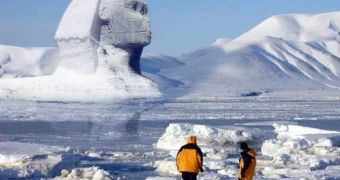You got the point, apparently the Earth has more than one North Pole! I'll put it like this: the North Pole can be anywhere you want it to be. It could be in Alaska, in the town called 'North Pole' for what I'm concerned, but then we would be deviating away from the story. For starters, there is the geographic north of the planet which represents the intersection of the imaginary lines we call meridians, located somewhere in the Arctic Ocean.
Secondly, we have the instantaneous north pole which is basically the point on the surface of the Earth where the rotational axis of the Earth meets the ground. However, even this instantaneous north pole does not have a fixed location, due to the Earth revolution around the Sun. The instantaneous north pole describes a circle of the planets surface, called the Chandler wobble, which has as center the point called the north pole of balance.
Then there is the magnetic north pole of the planet. This is determined by a magnetic field generated by the movement of fluid inside the core's planet. This magnetic field generates two locations on the surface of the planet, north and south, which, as you already know, can be easily determined with the help of a magnetic compass. Magnetic lines penetrate through the mass of the planet and emerge to the surface in a vertical pattern, only to form closed loops high above the planet's surface. Meaning that, if one were to stand directly over the magnetic north pole, the needle of the compass would point in a vertical direction.
A secondary magnetic pole, is the north geomagnetic pole, totally different from the true magnetic north pole which lies somewhere in Canada - opposing to general belief which states that the magnetic north pole lies in the geographic north pole. The north geomagnetic pole is a remnant of the variable magnetic fields of our planet, is much weaker than the magnetic north pole and is located in Greenland, fact which led to numerous confusions in the past.
And, to complicate things even further, one should probably know that the Earth's magnetic north pole is not stable. In fact, there is evidence that the magnetic north and south pole shift places frequently. Since 1973, the magnetic north pole accelerated its movement from 10 to 50 kilometers per year and seems to follow a direction which will most likely take it from Canada towards the Siberian regions of Russia.
One more confusing fact. Why does the north pole of the needle of the compass tend to be attracted towards the north pole of the Earth? We were thought, in school, that identical poles repel each other, while different ones experience a force of attraction. As it turns out, it's just a matter of speaking. That's why many people have suggested that the magnetic north pole of our planet should be renamed as 'north seeking pole'
One way or another, the confusion still remains and with so many north poles there is no wonder nobody has found Santa's house yet.

 14 DAY TRIAL //
14 DAY TRIAL //